Kraków 2023-01-19
Centralne Studium Samolotów. CSS-12.

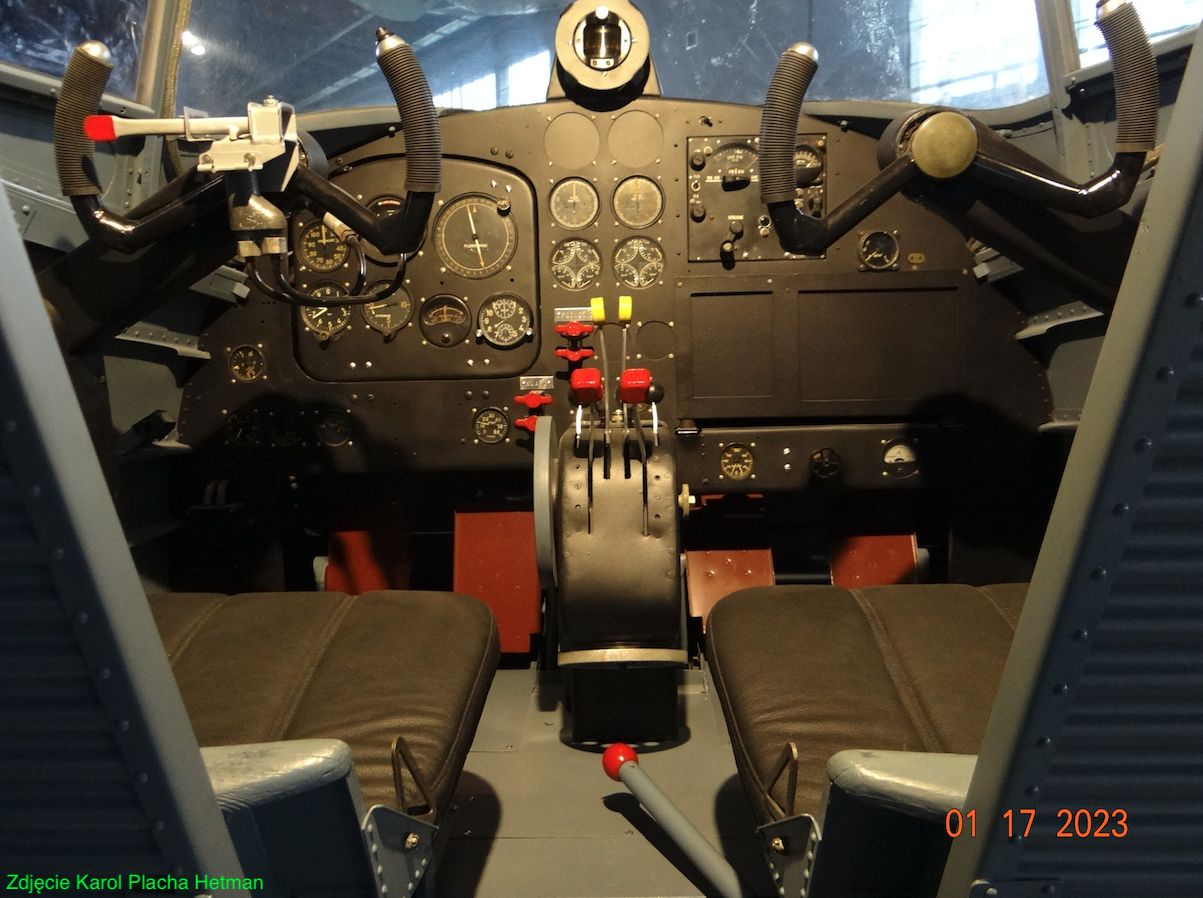
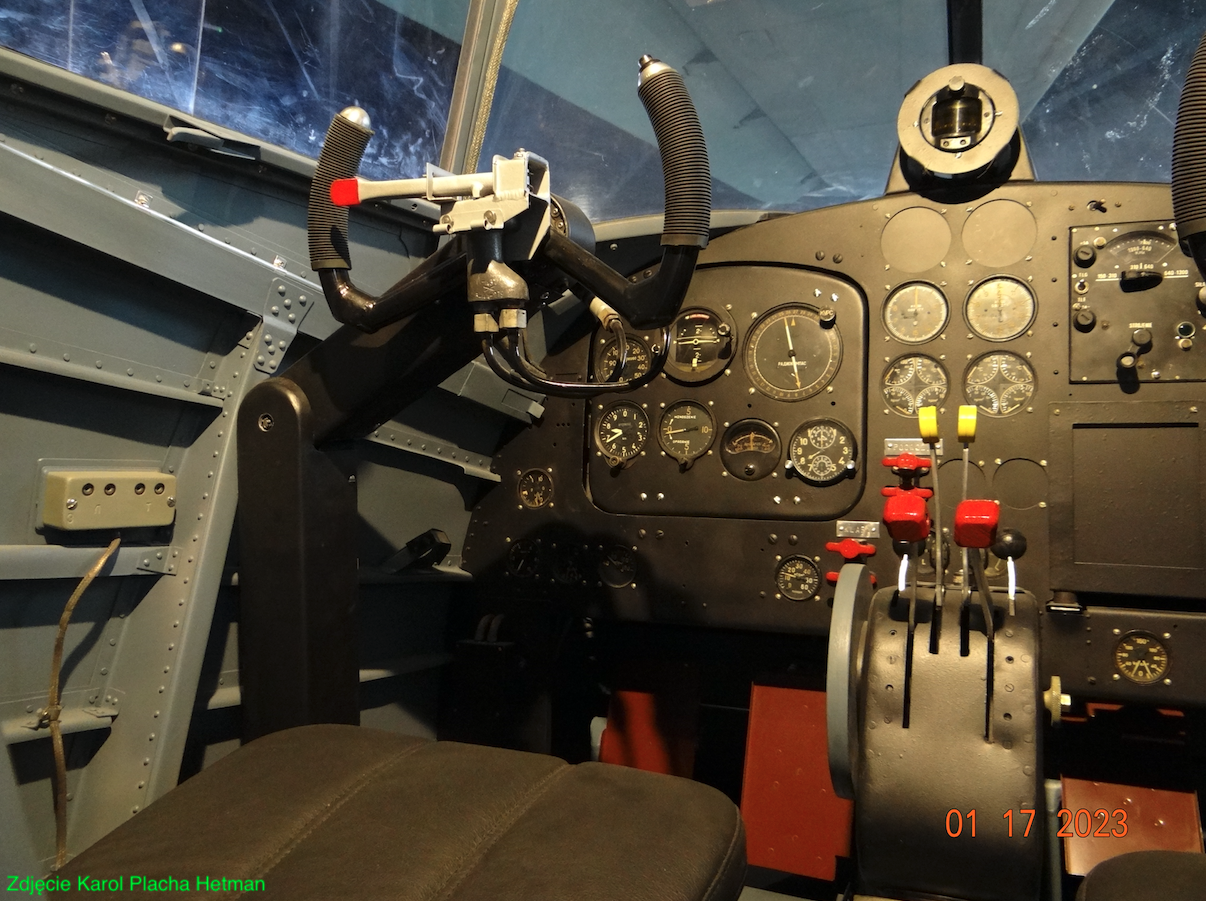
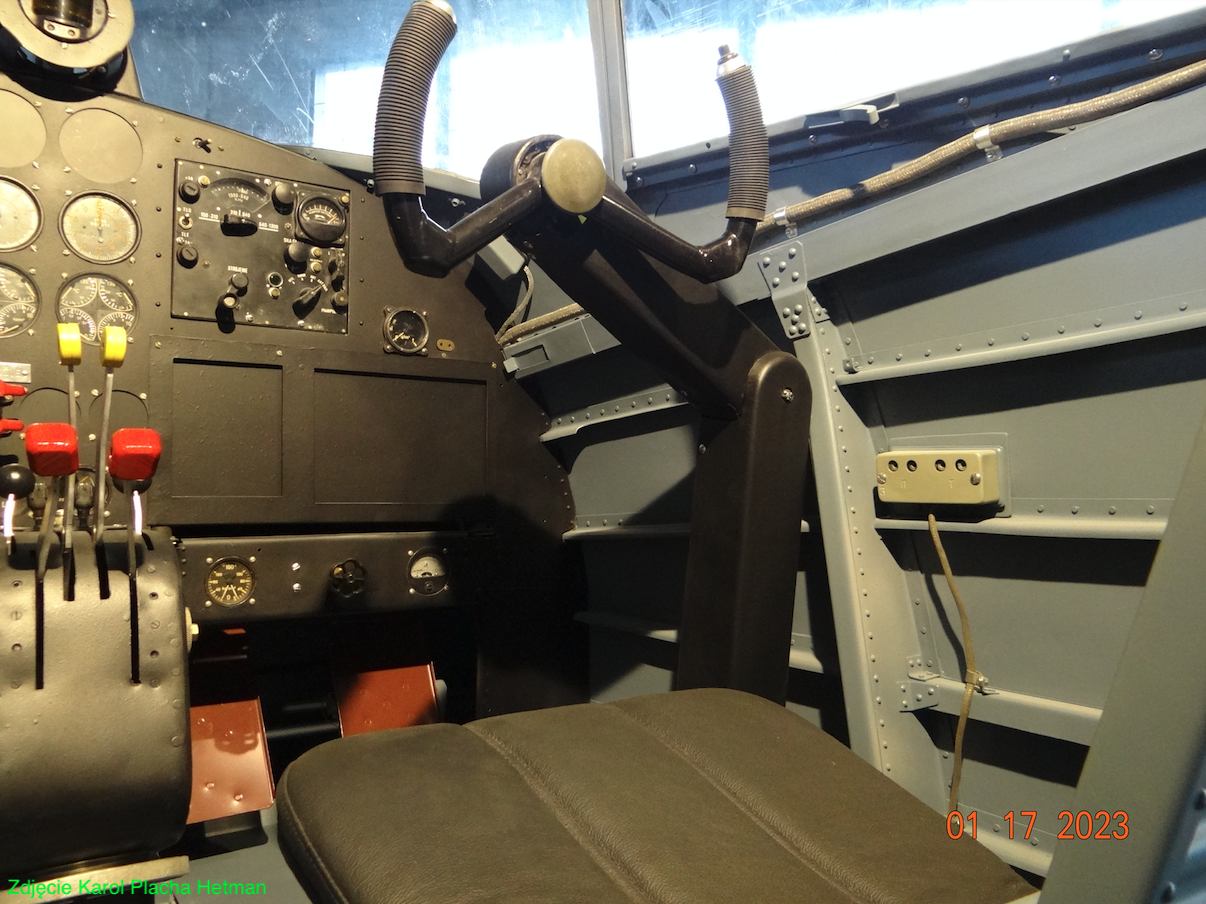
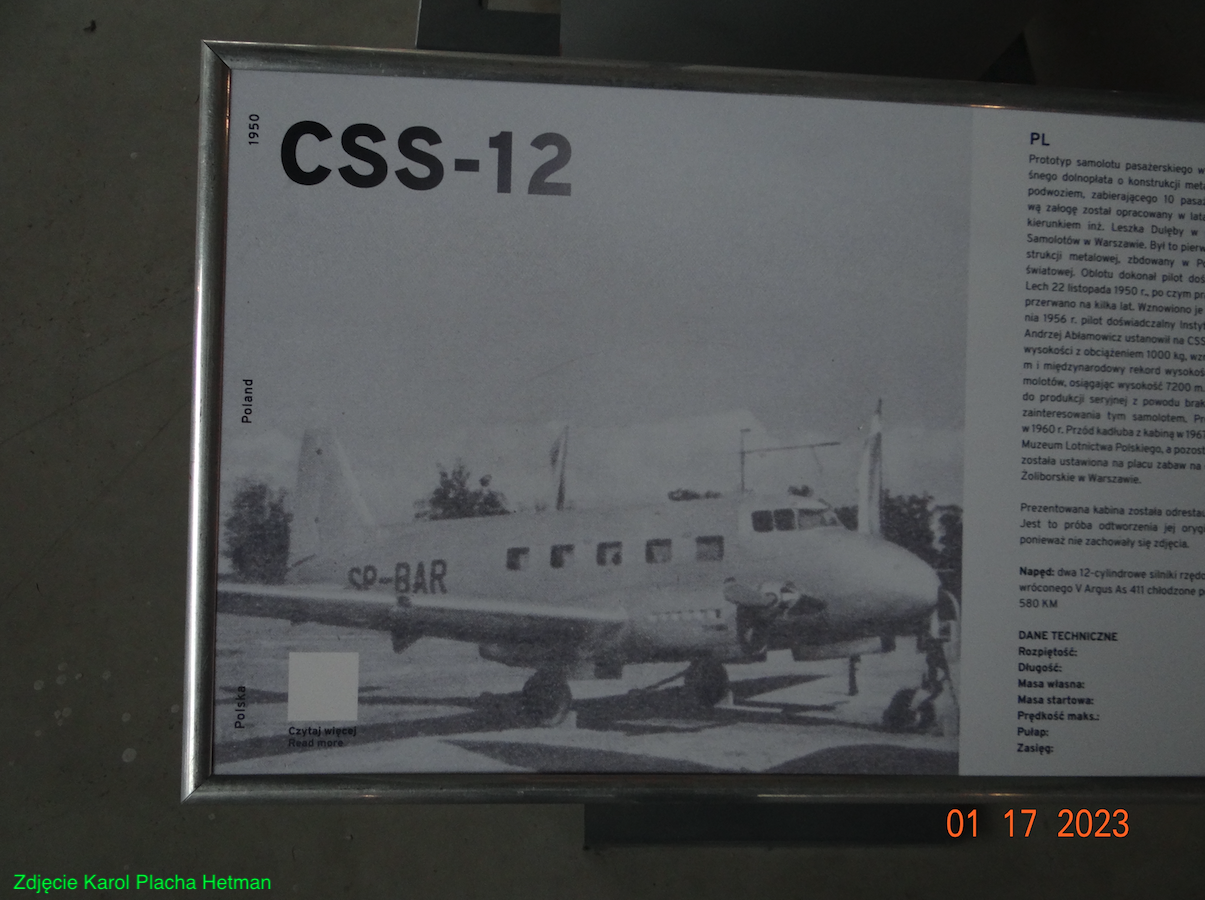
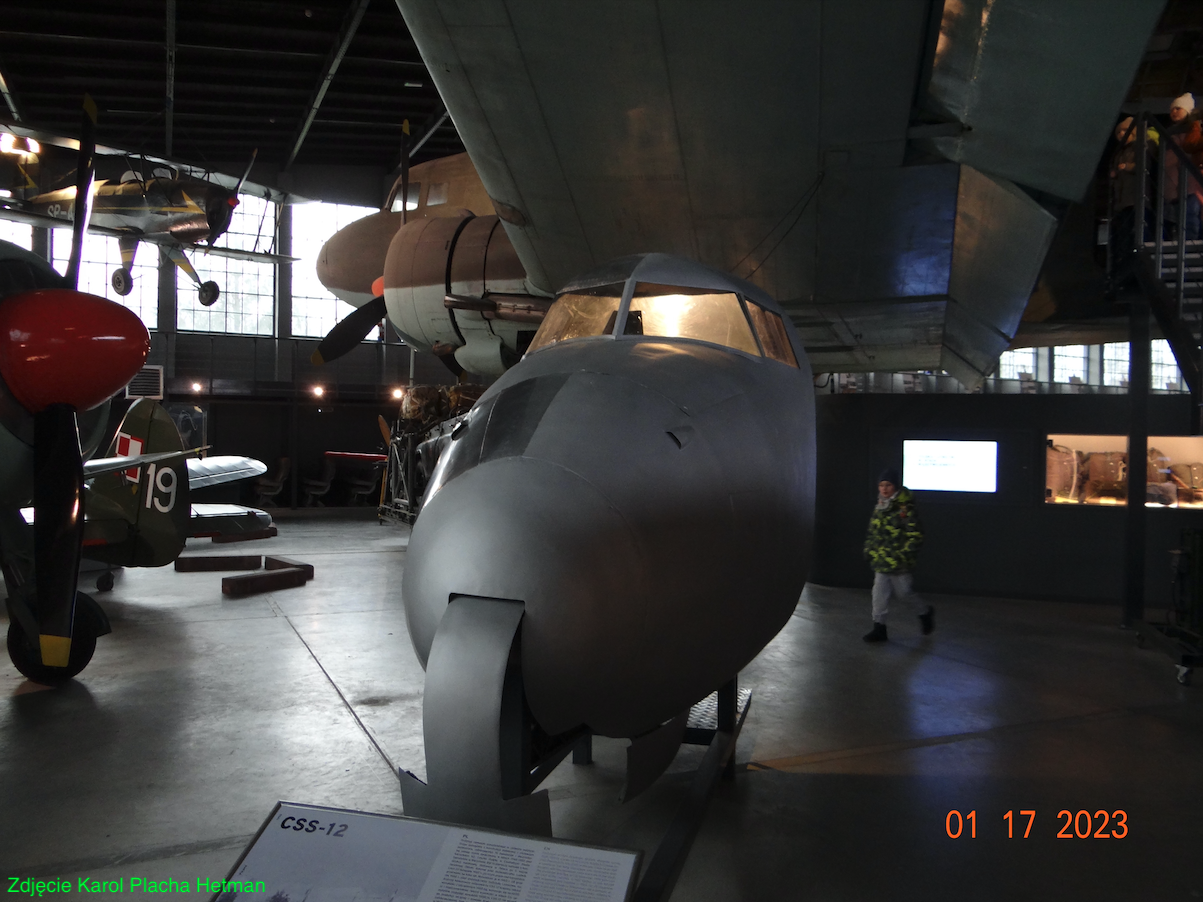
The CSS-12 machine was a Polish passenger plane designed to carry 10 passengers on domestic lines. The crew of the plane consisted of two pilots. The aircraft was developed at the PZL Central Aircraft Study in Warsaw. It was a task commissioned by the ministry of the Ministry of Communications. As part of a similar task, CSS-10 and CSS-11 sports planes were made, among others. Design work began in 1948. The team of constructors was led by engineer Leszek Dulęba. In the assumptions, the aircraft was to be an all-metal, cantilever low-wing monoplane, powered by two piston engines. It was the first metal aircraft built in Poland after World War II.
The big problem was the choice of engines. Pro-German Argus As 411 engines were chosen, with a power of 580 hp (435 kW). Many of these engines were left by the Germans in Poland. Argus As 411 is a 12-cylinder engine, in the inverted "V" configuration, with a 60-degree fork. The engine is air-cooled. Historically, the engine is a development of the Argus As 410 engine, where power was increased. The increase in power by 25% was achieved by increasing the boost pressure and increasing the revs. Power of 600 hp was obtained. The deflectors and airflow channels have been enlarged to improve engine cooling. The engine was equipped with an automatic control that regulated engine boost, ignition advance and propeller blade settings. This was to keep the engine in the best working conditions. During the Second World War, the Argus As 411/410 engines were manufactured in France by Renault along with the Siebel Si 204 aircraft. After the war, the French company SNECMA built another 3,000 engines. Production ended in 1964. The engine was used in 7 different aircraft. One of them was the Swiss plane Pilatus P-2.
Data T-T Argus As 411:
12-cylinder inverted "V" arrangement. Air cooled. Maximum power 600 hp (441 kW) at 3,100 rpm. Economy power 380 hp (278 kW). Capacity 12 dcm3. Cylinder diameter 105 mm. Piston stroke 115 mm. Compression ratio 6.4. Curb weight 375 kg.
The aircraft's equipment was to be purchased in France. It was intended to import on-board instruments, aggregates, hydraulic systems and landing gear. However, Moscow forbade contacts with France. Therefore, it was decided to develop and produce the necessary equipment in Poland. But this resulted in an extension of the prototype construction time.
The CSS-12 prototype made its first flight on November 22, 1950. The pilot was Mr. Ludwik Lech. Factory flight tests were carried out at WSK Okęcie. The aircraft had registration marks SP-BAR.
In December 1950, work on the aircraft was discontinued. What has been said since 1949, that combat aircraft with turbojet drive will be produced in Poland, has become a fact. The WSK Okęcie company underwent reorganization and the Central Aircraft Study department was dissolved. Work on the CSS-12 aircraft was carried out on an ad hoc basis. The aircraft was subjected to static tests twice at the Strength Department of the Institute of Aviation in Warsaw under the direction of the head of this plant, engineer Tadeusz Chyliński, in 1951. As a result of the examination, the tail of the aircraft had to be corrected. In the period 1955 - 1956, static tests were carried out for work on the new MD-12 aircraft. On December 28, 1956, test pilot Andrzej Abłamowicz, on a CSS-12 aircraft with a load of 1,000 kg, set a national flight altitude record with the result of 6,600 m. In another flight, test pilot Andrzej Abłamowicz reached a flight altitude of 7,200 m, which was an international a record in the class of C1c aircraft.
The assessment of the CSS-12 aircraft was very positive. The airframe was done correctly. The aircraft had good performance and its handling was correct. It could be directed to mass production. The Argus As 411 engines turned out to be a problem, because the accumulated stocks were taken by the Moscow authorities. It was not possible to buy engines in France. Due to the lack of an alternative, the program of the aircraft was closed and mass production was not undertaken.
The last flight of the only CSS-12 prototype was made in 1960. In 1960, the aircraft was decommissioned. The aircraft was partially disassembled. In 1967, the front part of the fuselage with the crew cockpit was donated to the Museum of Aviation and Astronautics in Krakow, now the Polish Aviation Museum. The cockpit was initially in the Museum of Technology in Warsaw. The remaining part of the airframe was placed on a playground in the WSM (Warszawska Spółdzielnia Mieszkaniowa) Sady Żolbowskie estate in Warsaw. This part of the plane has not survived to the present day.
The cockpit of the CSS-12 aircraft was owned by the museum for several decades. In 2021, the renovation of the exhibit began. The restored cockpit on March 10, 2022, was set up in the museum's main hangar. The renovation was made on the basis of what was left and memories, because no photos have survived.
Construction CSS-12.
The CSS-12 aircraft was made in a classic layout. The aircraft was a low-wing, powered by two piston engines. Trapezoidal wings. Landing gear with nose wheel, fully retractable in flight.
Data T-T CSS-12:
Span 18.50 m. Length 12.75 m. Height 5.00 m. Bearing area 40.10 m2. Curb weight 3,734 kg. Take-off weight 5,500 kg. Payload 1,766 kg. Top speed 365 km/h. Cruising speed 322 km/h. Climb speed 5.3 m/s. Operating ceiling 6,440 m. Range 600 km.
Written by Karol Placha Hetman
